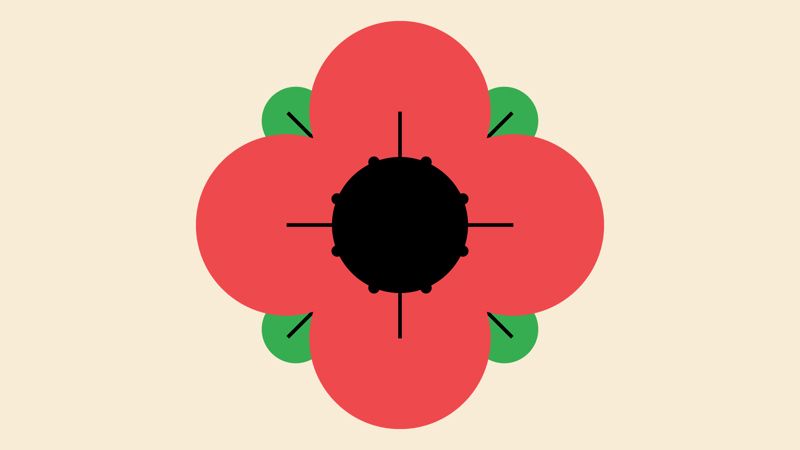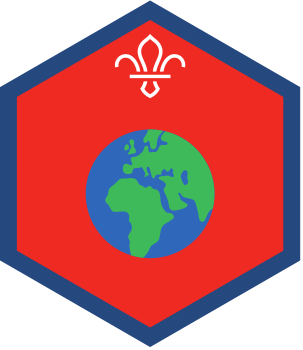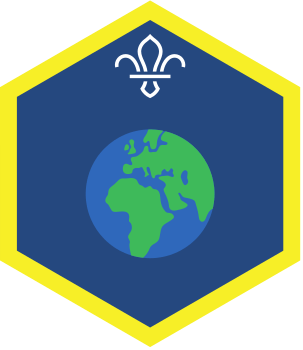
The Unknown Warrior
You’ll need
- Scissors
- Sticky tack
- A4 paper
- Pens or pencils
- Tables
- Chairs
- Access to a printer (optional)
- Laminator and laminating sheets (optional)
Remembrance honours people who serve to defend our democratic freedom and way of life. We unite across faiths, cultures and backgrounds to remember the service and sacrifice of the Armed Forces community from the United Kingdom and the Commonwealth. We will remember them.
- We remember the sacrifice of the Armed Forces community from the United Kingdom and the Commonwealth.
- We pay tribute to the special contribution of families and of the emergency services.
- We acknowledge innocent civilians who’ve lost their lives in conflict and acts of terrorism.
Remembrance doesn’t glorify war and its symbol, the red poppy, is a sign of both Remembrance and hope for a peaceful future. Wearing a poppy isn’t compulsory but it’s greatly appreciated by those who it’s intended to support. When and how you choose to wear a poppy reflects your individual experiences and personal memories.
Remembrance unites people of all faiths, cultures and backgrounds, but it’s also deeply personal. It could mean wearing a poppy in November, joining with others in your community on a commemorative anniversary, or taking a moment on your own to pause and reflect. Everyone’s free to remember in their own way or to choose not to remember at all.
- Armistice Day is the 11 November. It marks the armistice agreement that bought an end to the fighting of the first world war.
- People pause at 11am on the 11 November to remember service and sacrifice past and present.
- The national service of Remembrance happens on the closest Sunday to 11 November, which is known as Remembrance Sunday. Each year people gather at the Cenotaph in London and other memorial sites.
- We call the whole period around these dates Remembrance. There are many ways to take part in Remembrance
In 2022, the Royal British Legion remembers the Service of those who work to protect us and our ways of life. Whether in the Armed Forces, Emergency or Civilian Services, past or present, we remember who has served, how they served and why it’s important that we continue to remember them.
Before you begin
- Use the safety checklist to help you plan and risk assess your activity. Additional help to carry out your risk assessment, including examples can be found here. Don’t forget to make sure all young people and adults involved in the activity know how to take part safely.
- Make sure you’ll have enough adult helpers. You may need some parents and carers to help if you’re short on helpers.
Getting ready for this activity
- Print out some information and pictures about the history of the Unknown Warrior. You can find some information on Westminster Abbey’s website.
- Older groups may be able to bring in their own research.
- You could separate the information into topics such as: who the Unknown Warrior is, where they’re buried, why they were buried there and when they were buried.
- Read through the text written on the memorial of the Unknown Warrior and make sure you understand what it means so you can explain it to the group.
- Make each group a copy and split it into sections for everyone to put back together. It’s up to you how many pieces you make and whether you write or type the text. We’ve included it below.
- Set out enough tables and chairs for everyone to sit at. Place some pictures, paper and pens on the tables, too.
Discover what happened
- Everyone should sit down at a space around a table.
- Everyone should talk about the Unknown Warrior. The person leading the activity should make sure everyone understands who the Unknown Warrior is, why they’re buried in Westminster Abbey and why they’re important for Remembrance.
- If anyone’s completed their own research, now’s their time to shine. What can they tell everyone else?
- Everyone should split into small groups – one table makes a great small group.
- The person leading the activity should give everyone a piece of the memorial text and some sticky tack.
- Each team should work together to put the text in the right order by sticking the pieces on the wall or table. People could take it in turns to leave their seats – but they can work together to figure out where each piece goes.
- When everyone is happy with the order they should read it through and then compare it to the original. An adult volunteer or young leader should help people understand any words they don’t know.
Time to reflect
- Everyone should sit back down in their place.
- Everyone should talk about what they would say to the Unknown Warrior if they had a chance to communicate with them.
- Think about things like how big wars ended, how we remember everyone who died in war and how the world has changed.
- Everyone should spend about 15 minutes using their pens and paper to write a story, letter, or poem to the Unknown Warrior. It should include some of the things people have just talked about and is a great chance to say thank you and reflect.
- People’s creations don’t have to be long. Each table could work together, too.
- Once everyone has finished, people who want to should take it in turns to read their letter or story to the rest of the group. Leave some time for questions or reflections in between each person.
- People could read part of their letter, poem or story if you’re short on time or they don’t want to read it all.
At the west end of the Nave of Westminster Abbey is the grave of the Unknown Warrior, whose body was brought from France to be buried here on 11 November 1920.
The grave, which contains soil from France, is covered by a slab of black Belgian marble from a quarry near Namur in Belgium. On it is the following inscription, composed by Herbert Ryle, Dean of Westminster:
Beneath this stone rests the body
Of a British warrior
Unknown by name or rank
Brought from France to lie among
The most illustrious of the land
And buried here on Armistice Day
11 Nov: 1920, in the presence of
His Majesty King George V
His Ministers of State
The Chiefs of his forces
And a vast concourse of the nation
Thus are commemorated the many
Multitudes who during the Great
War of 1914 – 1918 gave the most that
Man can give life itself
For God
For King and country
For loved ones home and empire
For the sacred cause of justice and
The freedom of the world
They buried him among the kings because he
Had done good toward God and toward
His house
Reflection
This activity gave everyone the chance to think about everyone who died during war. It helped everyone reflect on how different our lives are compared to back then. What did people learn about the Unknown Warrior? What’s the importance of them being buried in Westminster Abbey? Why is it important to think about and reflect on the Unknown Warrior during Remembrance?
In this activity, everyone thought about Remembrance and how it links to their lives. What did people find out about Remembrance? How did it make them feel? How are people going to take part in Remembrance this year?
Safety
All activities must be safely managed. You must complete a thorough risk assessment and take appropriate steps to reduce risk. Use the safety checklist to help you plan and risk assess your activity. Always get approval for the activity, and have suitable supervision and an InTouch process.
- Online safety
Supervise young people when they’re online and give them advice about staying safe. Take a look at our online safety or bullying guidance. The NSPCC offers more advice and guidance, too. If you want to know more about specific social networks and games, Childnet has information and safety tips for apps. You can also report anything that’s worried you online to the Child Exploitation and Online Protection Command. As always, if you’ve got concerns about a young person’s welfare, including their online experiences, follow the Yellow Card to make a report.
It’s up to you how many pieces you split the text into and how obvious you make the pieces. You could create unique shapes to make it a simpler puzzle.
- Make sure you print the font in a big enough size for everyone to be able to read it.
- People could nominate a friend to read things out for them if they’d feel more comfortable sharing in that way.
All Scout activities should be inclusive and accessible.
Think about creating a ‘Wreath of thanks’ with your group. You could make the poppies using pebbles, cotton, or paracord and write a thank you message to attach to each poppy. You could also make a felt wreath.
If you want to explore Remembrance further and create your own virtual Remembrance event, have a look at A Remembrance reflection.
Ask everyone to complete their own research about the Unknown Warrior.

